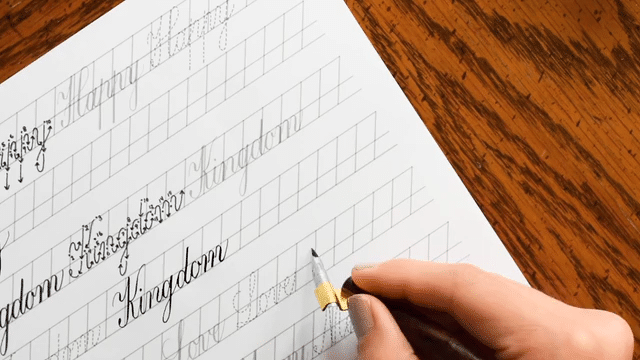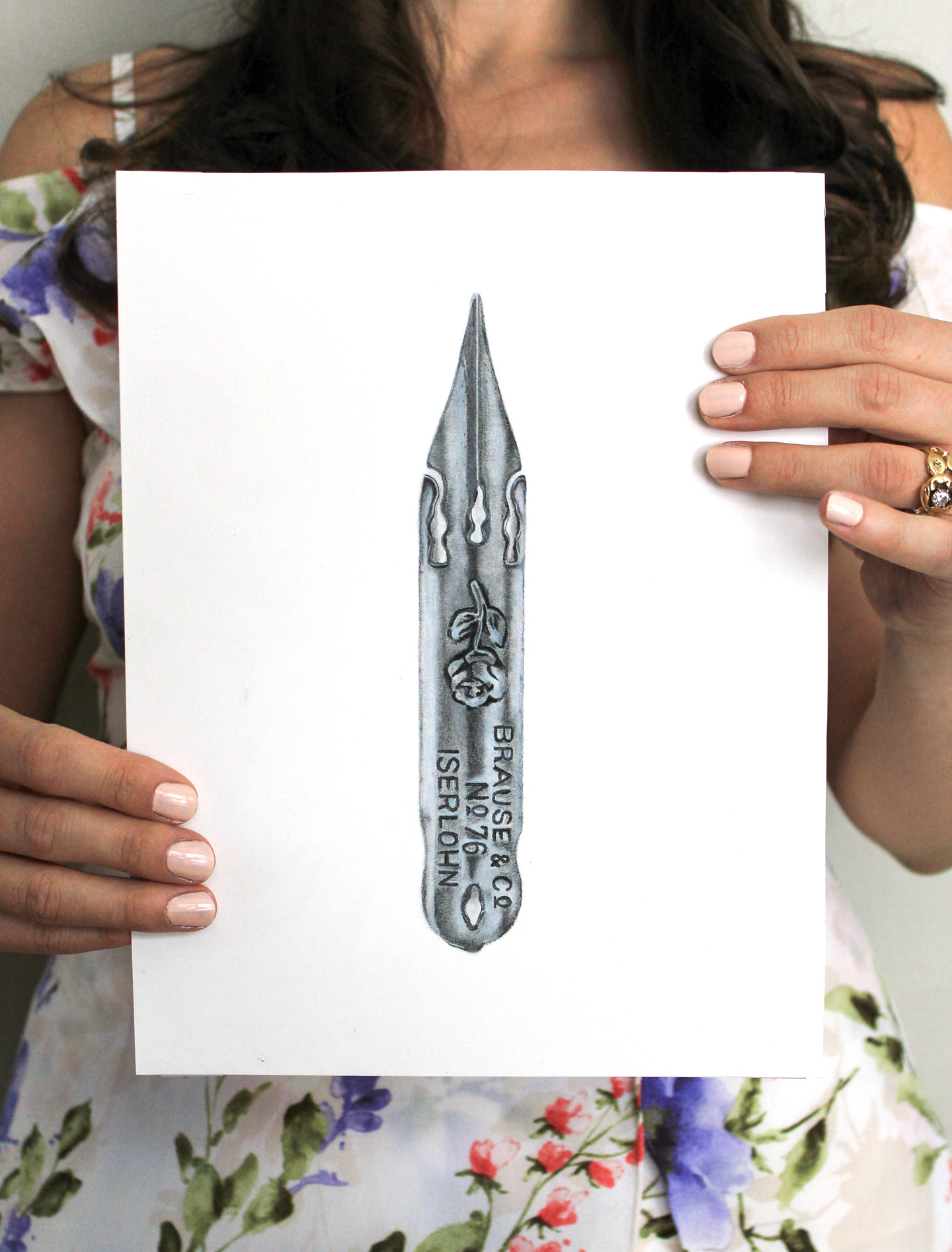
The inspiration for this 3D guitar painting come from a trip to the men’s restroom, of all places. You know how there is always a line for the women’s restroom, but the men’s restroom is more — well, in-and-out? One day at a coffee shop, I had had enough of the women’s restroom line, so I went into the men’s. When I looked around, I noticed this super-cool 3D electric guitar painting:

No, in case you are wondering, I did not have my phone with me. But you can bet that after I was finished in the bathroom, I raced back to my table, grabbed my phone, and went right back into the men’s restroom to take a photo of the painting. This all happened much to the bewilderment of the women still waiting in line to use the women’s restroom. Gender roles, schmender boles; I got inspiration out of my trip to the men’s restroom and I don’t regret it. Oh, the painting is in Ozo’s on Arapahoe, if you’re Boulder-based and curious.
For months, I have been meaning to emulate the Ozo Coffee guitar but with an acoustic twist. I’m more of a warm color fan, and my brother loves and plays his acoustic guitar often. In fact, we all grew up around guitars … check it out:

My talent, unfortunately, never grew beyond that point — but both Treat {far right} and Baker {middle} are excellent players. I decided to create a painting for Treat because A) he just became a father, as of yesterday, in fact; and B) I didn’t give him a birthday gift because I was planning on making this.
The other night, I finally got everything together to create this guitar. Hopefully my scrambled instructions can help you to make your own 3D guitar painting!
First, I took a canvas that I purchased from Michael’s — for $2.50 (!), laid a broken guitar over it, and traced around the guitar:

Next, I glued packing peanuts down in the area that I wanted to be 3-D. Really, you could use anything here, though … crumpled-up paper, layers of foam board, etc. You just have to be resourceful and creative!

Here’s the guitar with all the packing peanuts glued down:

Next, I traced the guitar again over a cardboard box. I cut out the tracing {in pieces}, drenched the packing peanuts in Elmer’s glue, and laid the cardboard over the peanuts.


And I ended up with this:

Now that the top was covered, I still needed to do something about the sides. Cutting and bending strips of cardboard to comprise the edges seemed a daunting task, so I glued down strips of magazines to create the illusion of solid sides. I had to tear some of them at an angle to get them to work just right.
One thing to remember about gluing down material like this: you should always brush the glue on the back of your paper/magazine with a paintbrush. If you drizzle the glue on, the magazine will dry bumpy rather than smooth.

Here’s the guitar all covered in magazine bits — thanks, Travel & Leisure magazine!

My next step was to take gesso/primer and slather it all over the guitar. I also used some cheap black paint to paint the soundhole.

Then I went to bed and let the paint dry overnight, which is an unnecessary step, but understandably I was ready to call it a night at this point. When I woke up the next morning, I realized that the neck needed to stick out a bit more than the body, so I glued down an additional piece of cardboard.

Then the fun part came: I put the first coat of paint on the guitar!

I used acrylic paint to do this first coat … and actually the gray that I used for the background is Oops paint from the Home Depot. It was meant to be used on a wall — but I’ve got lots of it and try to use it whenever I can!
Once I had the first, matte coat, I blended up my yellows, browns, and reds to add some warmth and dimension to the guitar.

And then it was time to make the frets, which I used kato polyclay to construct. Okay, usually I don’t have stuff like that laying around, and you don’t have to, either {I hate it when tutorials require special material}. If I hadn’t had the clay on hand, I would have just rolled up pieces of aluminum foil and glued them down. I do have to admit, though, that the clay was relatively easy to use, and once baked, added cool material contrast to the piece.

I am afraid I skip ahead a little with the pictures, so I will describe what I did to end up with the creation in the photo below:

First, I rounded out my paint job by combining yellow acrylic paint and gold ink from Winsor & Newton. I flecked this metallic paint on with a toothbrush. Then I painted the colorful border around the sound hole. Once that dried, I painted over the entire guitar with gloss medium, which is just a glossy goop. When that was dry, I glued down little cut out rectangles of aluminum foil to make the position markers. Then I used cheap craft wire to make the strings. I simply used a flat thumbtack on the back of the canvas to pin them down on the top, then repeated the thumbtack step on the bottom. So at the end, I had six thumbtacks holding down six wires on top; and six thumbtacks holding down the same six wires on the bottom.
Next, I cut out the pick guard and painted over it with black paint and gloss medium. I glued it down near the sound hole.

Now, though I loved the guitar at this point, the background wasn’t doing much for me, so I decided to add interest to it. I wanted just enough detail to make it cool, but not enough to “steal the show”. I painted over the gray background with a mixture of the clear gloss medium with gold ink to give the gray an iridescent effect. Then I got out the trusty toothbrush and flecked black paint all over the background.

{Yes, it was messy.}
And here’s what I ended up with!:


I made this 3D guitar painting in record time — I think it only took around five hours. I’m sure you’re wondering how I managed to do this with all the paint involved. Here’s my secret: a hair dryer. For cosmetic purposes, I really should start using the hair dryer to, you know, dry my hair. However, the poor appliance has been used for a couple of years now to dry paint. I use the hairdryer on the high setting to exponentially speed up the drying process so I can add coat upon coat of paint!
My brother was very surprised and pleased with the guitar painting. I enjoyed making it, and would recommend that you try your hand at it, too! I know this isn’t a comprehensive tutorial — this is one of those things you should draw inspiration from and make it work for you. Don’t have canvas? Use cardboard! Don’t have a guitar? Freehand trace one from a photo you find on the internet. Really, I have full confidence that you can make one of these just as good or even better than I can!
Oh — and please don’t be impressed by the guitar terminology I used throughout this post. I realized when I got started writing that I wasn’t quite up-to-speed on guitar vocabulary, so I had to use this anatomy of a guitar image to sound smarter.
Don’t forget; we’re giving away a personalized kitchen print! Like us on Facebook to win this for yourself — we’ll be so glad to have you as a follower!:

{Winner will be announced on October 24th. We are keeping track of all our new likes until then.}
Until next time, have a wonderful Tuesday, and let me know if you have any questions about creating this guitar!
























